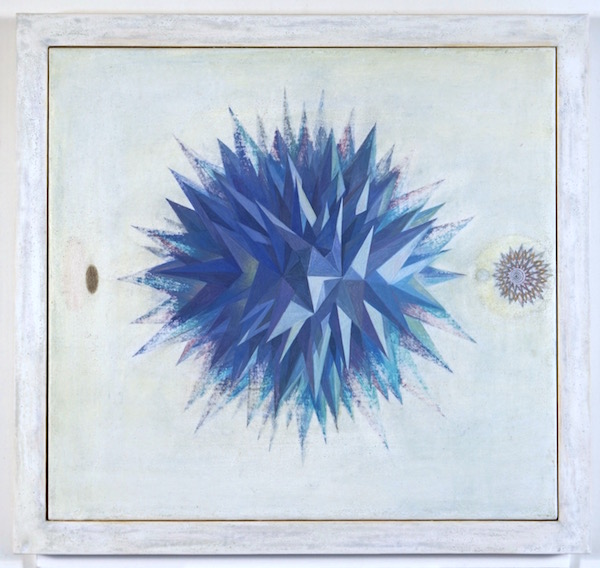

|
Materials and
Process
The first layers of paint are applied knowing that much will change. As the work progresses, some areas — objects, geometric forms or structures — are partially removed and then reconstructed. A great deal of time is spent rendering images that will ultimately be destroyed or submerged. Each painting is a puzzle that consists of many false starts and abandoned paths. Rather than setting a predetermined result, I choose an approach that reflects uncertainty or unpredictability. Forms, surfaces, all seem to be either growing and evolving or physically deteriorating. As the painted images build, overlap, and accumulate, the passage of time becomes documented (enmeshed) in the many layers of pigment. The larger paintings are in oil, on oil-primed linen. The forms reside — float or drift — in an atmospheric surround; because the oil ground is not, compared to traditional gesso, translucent, I brush the entire surface of the canvas. The thinly applied layers of paint create a luminous field. Smaller works are egg tempera, painted on gessoed - calcium carbonate and r.s. glue - panels, with occasional additions of graphite and silverpoint. Due to the nature of the medium, these smaller images tend to be more precise than the larger, oil on canvas paintings. And because the gesso ground offers a unique, potent or potential luminosity, I leave areas of the bright surface either unpainted or lightly washed in color. |